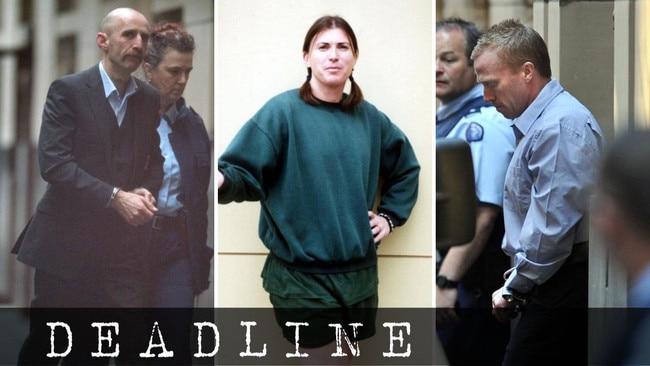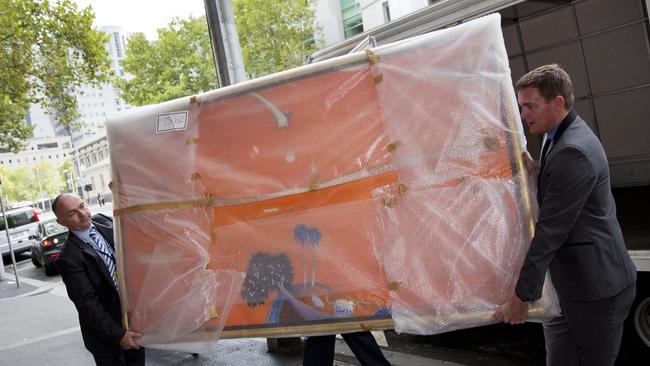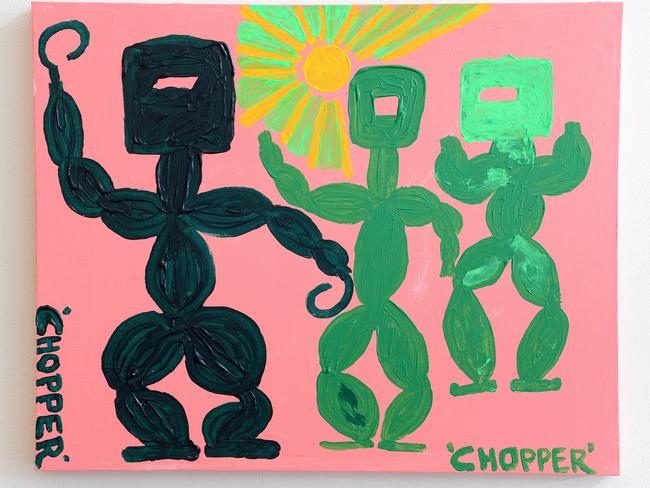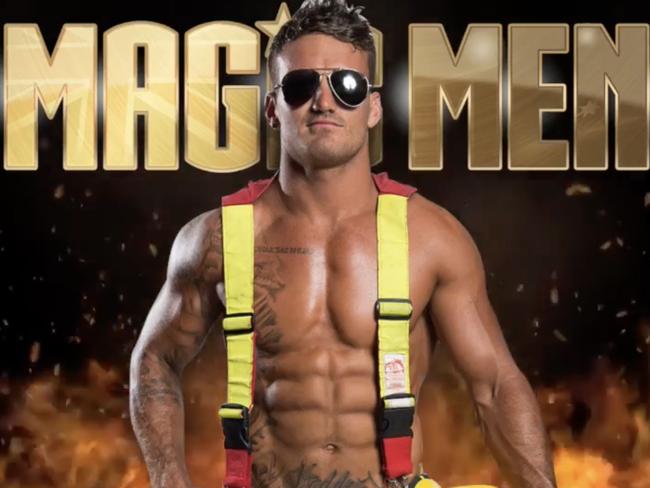Deadline: Paul Denyer on list of criminals too risky to release
Old robbers are seen as capable of reform, but murderers and sexual deviants less so. Which is why the Frankston serial killer will never see the light of day.

Police & Courts
Don't miss out on the headlines from Police & Courts. Followed categories will be added to My News.
Andrew Rule and Mark Buttler with the latest crime buzz.
Why Denyer won’t walk
The serial killer originally named Paul Charles Denyer is due for parole, and may have already have been given the news he will be staying in jail.
The adult parole board has to weigh up the rights of a prisoner against the potential risk to the public. In the Denyer case, the risk surely seems too high.
Parole board members will remember the horror of repeat offenders like vicious serial rapist Adrian Ernest Bayley being turned loose, in Bayley’s case so he could assault and murder ABC employee Jill Meagher.
No one in authority wants to be blamed for putting another Bayley on the streets.
Feedback on long-term prisoners’ attitudes and behaviour comes from several sources, not least those whose job it is to watch them behind bars.
An example. In the case of the notorious bank robber, suspected killer and escapee, Russell ”Mad Dog” Cox, senior prison officers were happy to provide glowing references for the infamous prisoner who had once spent 11 years on the run after breaking out of a “supermax” prison.

When Cox stated he was giving up a lifetime of crime to marry his long-term partner Helen Deane and live a quiet life, he was believed. The result: “Cox the fox” hasn’t come under police notice since being released in 2004.
But whereas old gunmen are seen as capable of reform, serial killers and violent sexual deviants are less trusted.
That might explain why Hoddle St killer Julian Knight stays behind bars while other serious criminals do not. Apart from anything else, Knight is dogged by constant reports of his bizarre reaction to the Port Arthur massacre in April, 1996.
As rolling news coverage showed the fatality list getting longer, Knight reportedly sulked and retired to his cell because Martin Bryant had murdered more people than he had.
Right or wrong, the perception that Knight still fantasised about mass shootings effectively “threw away the key” on him until he becomes a very weak, old man.
Knight and Denyer are not the only prisoners seen as too high risk to release, just the best known.
Another day, another art scandal
Fresh news that another art market scandal needs investigation is shocking but no surprise: the art racket is up with horse dealing, card cheats and loaded dice.
Maybe the best Australian “true crime” book of recent years isn’t about unsolved murders but a whodunnit — as in, who “done” the fake Whiteleys sold for millions to mug buyers who swallowed the cunning bait.
The bait being a confected story that the erratic genius Brett Whiteley, a heroin addict, had sneakily produced and given away or traded works that, strangely, experts and even his own family didn’t know about.
There’s a sucker born every minute, which explains why another noted painter-addict, the late Howard Arkley, seems to have left more paintings behind than anyone knew of while he was alive.
The addict’s weakness for a fast dollar created vaguely plausible provenance for paintings “found” after his death. Like rabbits, they seemed to multiply.

Conveniently for would-be forgers, drug-addicted artists might have given away fresh paintings as gifts or to have bartered them in return for quick cash or drugs.
Arkley’s neat diagrams of 1960s suburban brick veneer houses are easier to knock up than fake Whiteleys are, so the chances of dodgy “Arkleys” still floating around the market are relatively high. Not that anyone who owns one wants to know that, at least until after they sell it to some other gullible snoozer.
Speaking of drug-addicted artists, the late Chopper Read exploited the hero worship of the Archibald Prize winner Adam Cullen, soon after the latter scored the big gong with a rough likeness of the actor David Wenham.
Cullen was erratic and easily manipulated. He did the drawings for Read’s alleged children’s book, Hooky The Cripple. And he obligingly coached the earless standover man in his (Cullen’s) trademark technique of using bold outlines.
Read was a quick learner and was soon banging out his paintings — using his dog’s kennel for an easel — which he’d sell for two grand in the hand. His specialty seemed to be variations of Ned Kelly with boobs, which put him ahead of the transgender curve.

Not so well-known is that Read got Cullen to sign several blank canvases so they could later be turned to advantage.
It’s no shock that indigenous paintings are the subject of the latest scandal, exposed last week by News Corp investigative writer Greg Bearup. The thrust of the story is not blatant forgery — more that there are allegations white people are modifying paintings by indigenous artists to make them more commercial.
The popularity of indigenous art has created a thriving cottage industry, perhaps more industry than cottage. Where there’s demand there is always supply, which is why many Old Masters had helping hands from their apprentices.
So, will anyone end up in legal trouble over the latest indigenous art scandal?
Defining “indigenous” might be tricky in court, given that a whopping 40,000 more Australians now claim indigenous heritage than they did in the previous census.
Among those born-again first people might be a few who like to sell paintings. It will be a brave judge who picks their way through that minefield.
Don’t you forget about me
Is Melbourne stripper “Matty Thunder” looking for love from behind bars?
Matty, whose real name is Matthew Hodder, is cooling his heels in a New Zealand prison on high-level drug charges.
It is alleged Hodder was trying to retrieve a big cache of cocaine from under a container ship called the Spirit of Auckland when arrested in wet scuba gear at Dunedin last year.
Now, either someone is setting up an elaborate prank or Matty is keen to take the plunge again, this time with the right lady.
Women in Melbourne have lately been getting invitations from Matty indicating he’s in the market for female companionship.

These requests are accompanied by images of the entertainer taking nude selfies of himself, much in the style that some footballers and jockeys try on.
In the end, a court may decide whether Matty is Mr Right or just another bent unit out to make fast bucks.
The charge he faces carries a maximum sentence of 14 years, meaning it could be a long wait before any romance can really blossom.
Of course, we know being behind bars does not disqualify a man from being an incurable romantic.
Deadline last year featured the case of a Mongol bikie called Robbiee_c_, whose quest for love was plain to see on social media.
“I really enjoy candlelit dinners and eating (censored),” the Casanova convict posted. Deadline does not believe he is a genuine cat lover.
Magistrate chews out accused
There’s a saying about being able to walk and chew gum at the same time. But don’t attend Magistrate Meagan Keogh’s court and try the second bit.
An accused person found that out the hard way at Heidelberg last week when, as he was trying to explain his legal problems, Ms Keogh pulled him up.
“This is a court hearing. You are not supposed to be chewing gum. There’s a tissue there. Can you spit it out,” Her Honour said.
As might be expected, courts tend to be places run by the rules.
One Deadline contributor recalls being told to put away a newspaper as he tried to fill in a mind numbing wait for a magistrates court matter many years back.
Feeling thirsty? Then get the hell out of court.
Parched members of the public gallery, who are not allowed to drink, have in the past noted with some envy the freshly filled jugs of cool water available to the bench, the bar table and witnesses.
“You feel like a real dick trying to bend down and drink at the same time while others are well-watered,” one seasoned court reporter says.
The same scribe suggests sunglasses are a no-no, even when perched on the forehead. And don’t even think about turning up in a hat.
As we now know from recent events, breastfeeding is also out.




